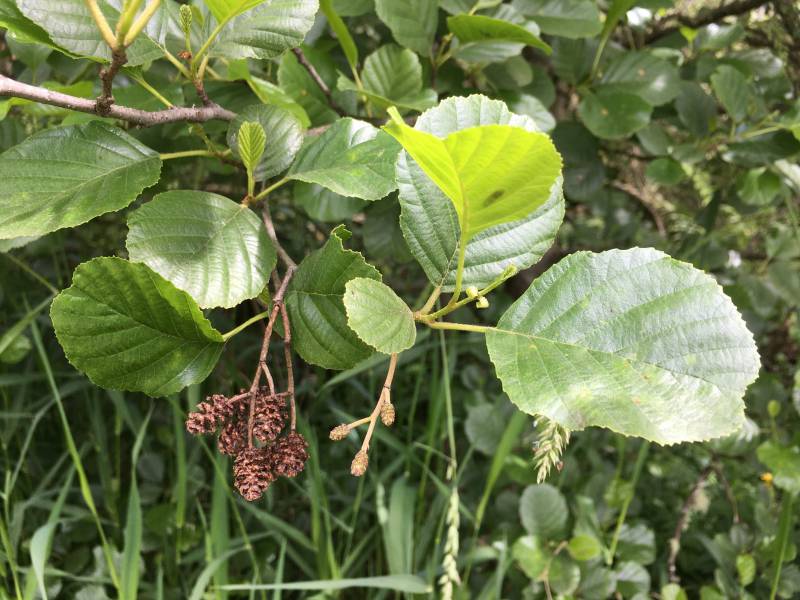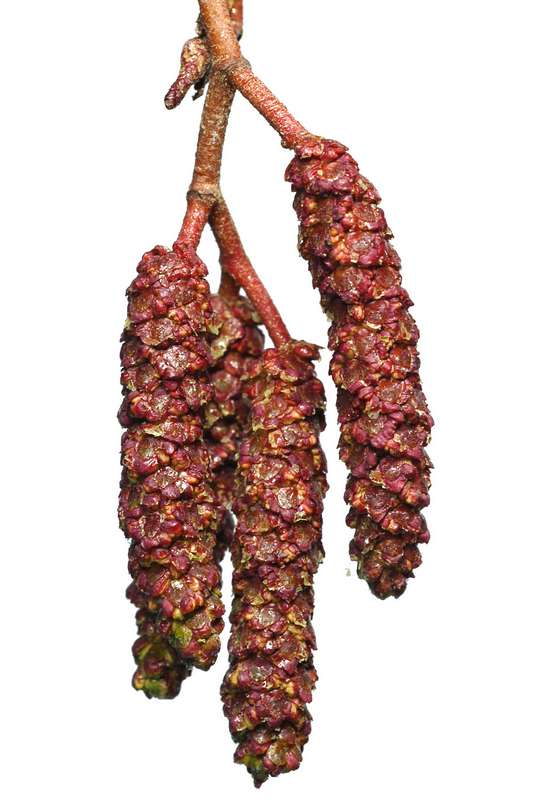Alnus glutinosa
Alnus rhombifolia
Black alder, European alder
California alder, white alder
Blades obovate to nearly orbiculate, 3--9 × 3--8 cm, margins often irregularly doubly serrate to nearly dentate, apex often retuse or obcordate, occasionally rounded; upper and lower surfaces heavily resin-coated.
Leaves alternate, simple, the blades elliptic or oblong-rhombic, 4-8 cm. long, acute to rounded at each end, finely to coarsely once- or twice-serrate, not wavy, hairy at least beneath, the upper surface deeper green.
: Catkins developing before the leaves on growth of the previous season; staminate catkins slender, pendulous, 4-8 cm. long, the stamens usually 2 per flower; pistillate catkins cone-like, woody, 10-15 mm. long, on stout peduncles often as long as the catkin.
Nutlet thin-margined but without a true wing.
Alnus glutinosa
Alnus rhombifolia
- Local floras:
CA,
OR,
WA
- Local Web sites:
CalFlora,
CalPhotos,
Flora NW,
PNW Herbaria
WildflowerSearch
iNaturalist (observations)
USDA Plants Database
- LBJ Wildflower Center
- SEINet
- Plants of the World Online
- Encyclopedia of Life
- Wikipedia
- Google Image Search



